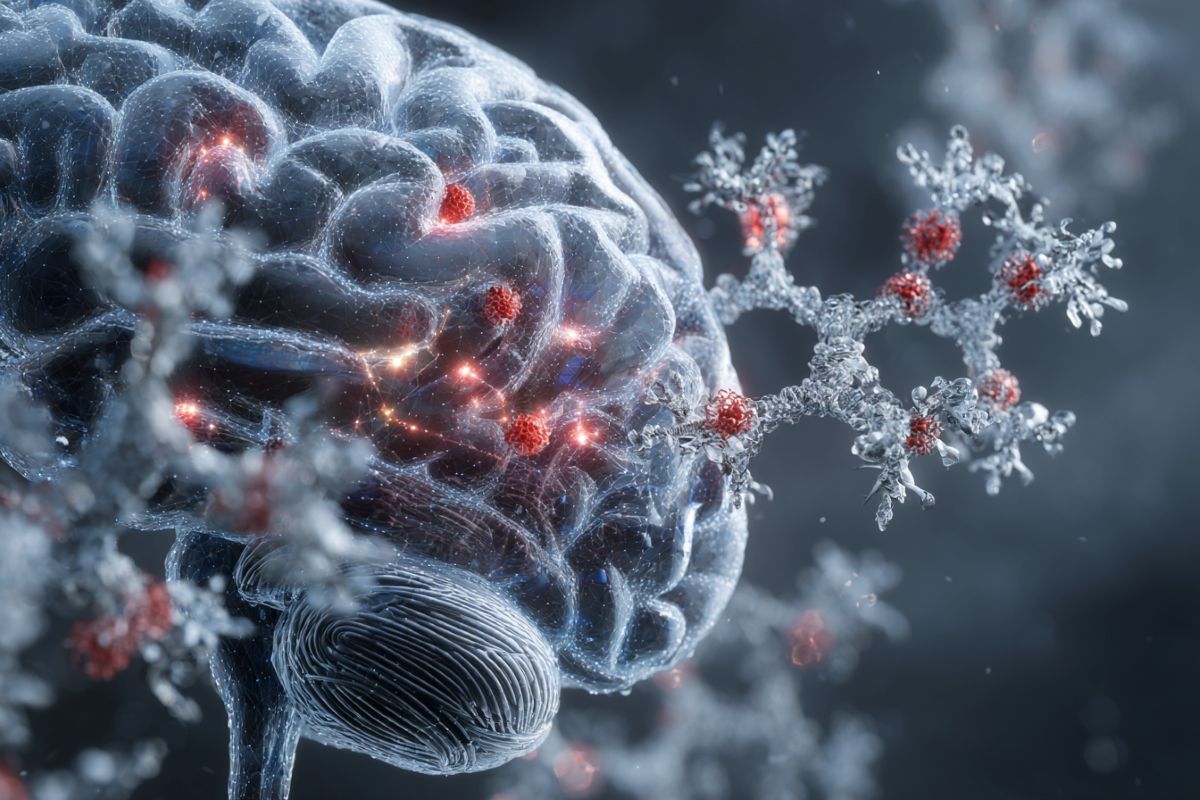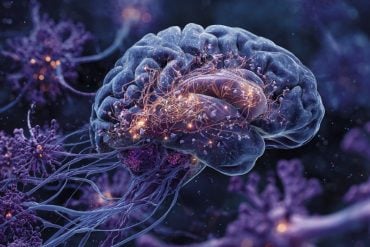Summary: Scientists have identified a new way to stop glioblastoma — the deadliest form of brain cancer — from spreading by altering its environment rather than targeting the tumor directly. The team showed that cancer cells depend on flexible hyaluronic acid molecules to invade surrounding brain tissue, but when these molecules were “frozen,” cells became immobile and dormant.
Unlike traditional treatments that try to destroy cancer cells, this approach shifts the tumor’s surroundings, potentially preventing regrowth after surgery. While still in early stages, this strategy could reshape how solid tumors are treated in the future.
Key Facts
- Matrix Reprogramming: Freezing hyaluronic acid locks cancer cells into a dormant state.
- No Cell Death Required: The approach alters the tumor environment instead of killing cells directly.
- Future Promise: Could apply beyond glioblastoma to other solid tumors driven by their surrounding matrix.
Source: University of Cambridge
Scientists have found a way to stop brain cancer cells spreading by essentially ‘freezing’ a key molecule in the brain.
The finding could pave the way for a new type of treatment for glioblastoma, the most aggressive form of brain cancer, although extensive testing will be required before it can be trialled in patients.

Glioblastoma is the most common type of brain cancer, with a five-year survival rate of just 15%.
The researchers, from the University of Cambridge, found that cancer cells rely on the flexibility of hyaluronic acid (HA) — a sugar-like polymer that makes up much of the brain’s supporting structure — to latch onto receptors on the surface of cancer cells to trigger their spread throughout the brain.
By locking HA molecules in place so that they lose this flexibility, the researchers were able to ‘reprogramme’ glioblastoma cells so they stopped moving and were unable to invade surrounding tissue.
Their results are reported in the journal Royal Society Open Science.
“Fundamentally, hyaluronic acid molecules need to be flexible to bind to cancer cell receptors,” said Professor Melinda Duer from Cambridge’s Yusuf Hamied Department of Chemistry, who led the research.
“If you can stop hyaluronic acid being flexible, you can stop cancer cells from spreading. The remarkable thing is that we didn’t have to kill the cells — we simply changed their environment, and they gave up trying to escape and invade neighbouring tissue.”
Glioblastoma, like all brain cancers, is difficult to treat. Even when tumours are surgically removed, cancer cells that have already infiltrated the brain often cause regrowth within months. Current drug treatments struggle to penetrate the tumour mass, and radiotherapy can only delay, not prevent, recurrence of the cancer.
However, the approach developed by the Cambridge team does not target tumour cells directly, but instead attempts to change the tumour’s surrounding environment – the extracellular matrix – to stop its spread.
“Nobody has ever tried to change cancer outcomes by changing the matrix around the tumour,” said Duer. “This is the first example where a matrix-based therapy could be used to reprogramme cancer cells.”
Using nuclear magnetic resonance (NMR) spectroscopy, the team showed that HA molecules twist into shapes that allow them to bind strongly to CD44 — a receptor on cancer cells that drives invasion. When HA was cross-linked and ‘frozen’ into place, those signals were shut down.
The effect was seen even at low concentrations of HA, suggesting the cells were not being physically trapped but instead reprogrammed into a dormant state.
The study may also explain why glioblastoma often returns at the site of surgery. A build-up of fluid, or oedema, at the surgical site dilutes HA, making it more flexible and potentially encouraging cell invasion. By freezing HA in place, it could be possible to prevent recurrence.
“This could be a real opportunity to slow glioblastoma progression,” said Duer. “And because our approach doesn’t require drugs to enter every single cancer cell, it could in principle work for many solid tumours where the surrounding matrix drives invasion.
“Cancer cells behave the way they do in part because of their environment. If you change their environment, you can change the cells.”
The researchers are hoping to conduct further testing in animal models, which could lead to clinical trials in patients.
Funding: The research was supported in part by the European Research Council and the Engineering and Physical Sciences Research Council (EPSRC), part of UK Research and Innovation (UKRI). Melinda Duer is a Fellow of Robinson College, Cambridge.
About this glioblastoma brain cancer research news
Author: Sarah Collins
Source: University of Cambridge
Contact: Sarah Collins – University of Cambridge
Image: The image is credited to Neuroscience News
Original Research: Open access.
“Molecular flexibility of hyaluronic acid has a profound effect on invasion of cancer cells” by Melinda Duer et al. Royal Society Open Science
Abstract
Molecular flexibility of hyaluronic acid has a profound effect on invasion of cancer cells
Extracellular hyaluronic acid (HA) has been shown to be important in cancer; low-molecular-weight HA typically correlates with cancer progression, high-molecular-weight HA with homeostasis.
Here we show that even high-molecular-weight HA can induce cancer cell migration when it is highly diluted.
HA-induced cell signalling is primarily through HA binding to the cell surface receptor, CD44.
We show by NMR spectroscopy that at high dilution, high-molecular-weight HA molecules access the conformations needed for strong binding to CD44 on the tens of nanosecond time scale, the relevant time scale for induction of CD44 signalling.
We further show that, by contrast, at higher concentrations, high-molecular-weight HA molecules have insufficient flexibility for strong CD44 binding.
The high dilution HA condition correlates with profound changes in brain cancer cell morphology and proteome which supports cancer cell invasion.
We hypothesize that the flexibility of HA molecules is central to HA-mediated cell signalling and that this concept can explain previous observations that the outcome of HA-mediated signalling depends on the HA molecular weight.
HA dilution leading to stronger HA signalling may be important in understanding the role that oedema plays in cancer recurrence after primary surgery.






